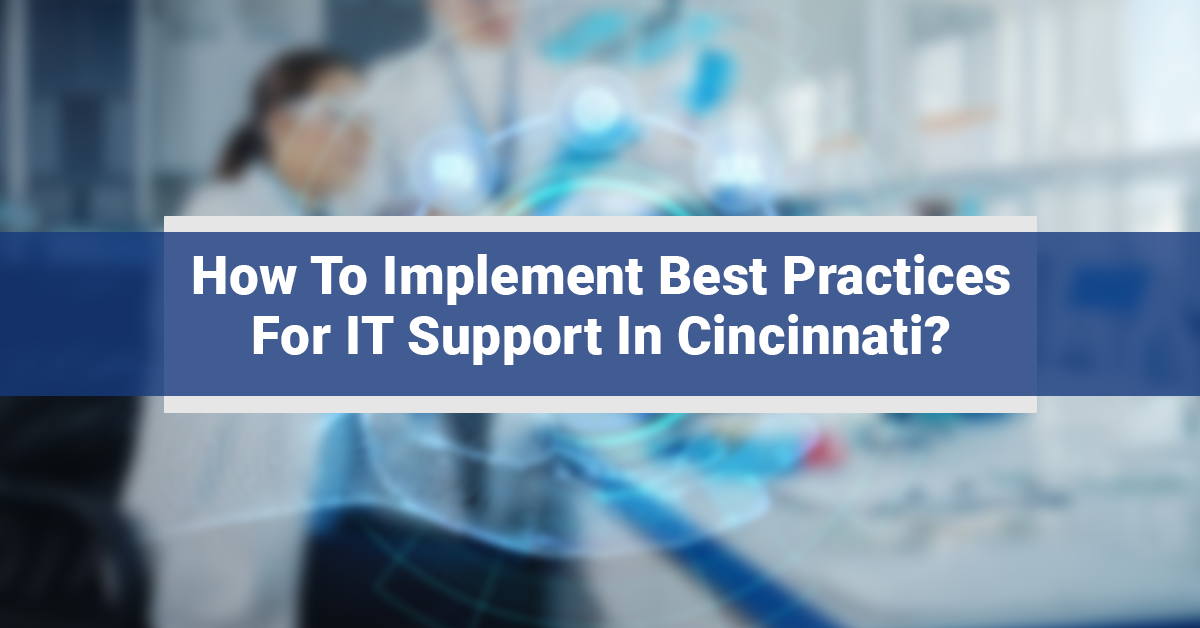Many growing organizations face enormous difficulties in their day-to-day operations as IT challenges develop parallel with new hires, offices, and other expansions. Whether the internet goes down unexpectedly, programs crash, or laptops fail, your company will need a "go-to" resource to hear and resolve complaints. IT Support in Cincinnati, Ohio can be a valuable asset in keeping each employee up to and running by resolving day-to-day IT concerns.
Let's look at the components your IT support requires to serve your company's IT needs efficiently.
1. Track Supporting Activities
Getting the best IT Support in Cincinnati, Ohio is no exception. Set KPIs and metrics to provide measurable data on the success or failure of your tech support activities. These data sets should help you cut costs, improve customer service, and boost IT support staff performance. For instance, the average number of hours it takes to resolve an equipment problem or the average number of hours it takes to close out a support ticket are some instances of quantifiable elements. In addition, keeping track of this information might reveal the strengths and weaknesses of the support team.
2. Address Problems Right Away
Businesses can improve client satisfaction by swiftly responding to customer issues. For instance, if your firm provides IT assistance through its multimodal service, the problem must be addressed as soon as possible. More superficial concerns can be resolved using live chat. On the other hand, you resolve complex client issues via voice conversations, email, or video chat services. Live technical support personnel must be present in every customer contact channel to swiftly answer customers' calls.
3. Create and Implement a Service Level Agreement
A Service Level Agreement should govern how your IT support desk operates (SLA). For instance, you can use the SLA to demand your Local IT Support in Cincinnati to solve a certain percentage of problems, react to calls and support tickets within a specific timeframe, and do other things. In addition, SLAs allow you to keep your help desk personnel accountable and, as a result, ensure that your help desk runs smoothly.
4. Specialized Help Desk Groups Should Be Deployed
A dedicated help desk group may be required in some circumstances to specialize or focus on a specific set of applications or IT difficulties. For instance, most of your workforce may rely on a particular application for their daily tasks, or you may have a mission-critical IT system that requires immediate attention. Again, the goal is to guarantee that the proper individuals respond to tickets and that time is not wasted in escalation.
5. Maintain a Sufficient Capacity
You must guarantee that your service desk has sufficient resources to meet your requirements. This means not only having enough employees to handle your call/ticket volume but also being able to respond to users/customers in different time zones and during off-hours and holidays.
Implement The Best IT Support Service Practice!!
Working with a managed IT services company is an excellent method to get IT infrastructure without creating it yourself (MSP). An MSP can provide you with a fully equipped IT help desk with a proven track record of success. Furthermore, you will receive the best practices listed above right out of the box, with no payroll or training issues.
SpliceNet Consulting has offered world-class IT support services to developing and established enterprises for over 25 years. We provide shorter ticket resolution times and more excellent resolution rates. To get started, don't hesitate to get in touch with us.


